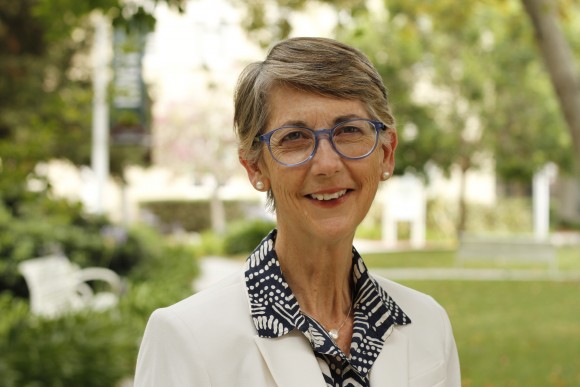When Treasury Secretary Jack Lew announced last month that a woman was to be featured on the $10 bill starting in the year 2020, he said the individual would be “a champion for our inclusive democracy.”

College of Educational Studies Dean Margaret Grogan, Ph.D.
Who better to speak on the issue of inclusion than the College of Educational Studies’ new Dean Margaret Grogan, Ph.D., whose area of expertise is women in leadership.
“I think the movement to put a woman on a bill is an attempt to say at a very high level that, yes, we see that there is merit to the argument that women have historically not been as prominently recognized as they should be,” said Dean Grogan, author of
Women and Educational Leadership
and
The Jossey-Bass Reader on Educational Leadership.
The announcement signals the first woman to appear on paper currency in over a century; the last time was Martha Washington on the $1 silver certificate from 1891 to 1896, preceded by Pocahontas’s fleeting appearance on the $20. Since then, it’s just been Sacagawea and Susan B. Anthony on $1 coins, what some would consider second-class currency status.
According to Grogan, currency plays an important role in a country’s identity. “We’re saying to the rest of the world, we’re really proud of these folks,” she said. “They mean something to us.”
Movements to feature women on U.S. currency have been gaining momentum in the last several years. Women on 20s (
womenon20s.org
) is the most vocal proponent of featuring a historically significant woman on — as its name suggests — the $20 bill. The $20 was an obvious target, considering Andrew Jackson’s opposition to paper currency and his part in the Trail of Tears, when Native Americans were forcibly removed from their homes and thousands lost their lives.
It was a surprise to some, then, when it was announced that the sawbuck would be the bill to feature a woman. And while the bill will certainly be a symbolic and historic step for women, plenty feel the $10 is less than ideal. For one, it’s the bill with the lowest circulation. Also, it’s unclear if the woman will get the bill all to herself, or if she’ll have to share space with the bill’s current resident, Alexander Hamilton.
For Grogan, the national dialogue shouldn’t be about which
one
woman should be featured on our currency. Rather, currency changes should reflect a wholesale reexamination of underrepresented groups and their place in our history and culture.
Weigh in with #thenew10
While #thenew10 yields some serious suggestions, like abolitionist Harriet Tubman, civil rights activist Rosa Parks, and Girl Scouts founder Juliette Gordon Low, others have suggested pop culture figures like Taylor Swift, Beyonce, and Bea Arthur. What do you think?
“It would be a tragedy if we have to choose one person when we have so many women who deserve recognition for the work they have done,” she said. “And I’m not limiting this conversation to just women. There are plenty of diverse men who should be recognized for their work too.”




Add comment